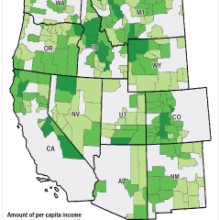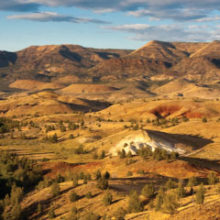- Malheur County has 4.6 million acres of public land within its boundaries (almost four-fifths of its land base), and nearly two million of these acres possess unique natural and recreational values that are not formally protected.
- Malheur County peers with permanent federal land protections on average grow faster, sustain agricultural employment better, have less economic hardship, and benefit from greater travel and tourism business activity.
- The report findings mirror a broader body of research that points to the advantages of protected areas for non-metro counties in the West; including economic growth, higher incomes, increased travel and tourism, and attracting people and businesses.

Analysis of the Impact of Protecting Federal Land in Malheur County, Oregon
This report (PDF) and executive summary (PDF) provide an analysis of the potential economic impact of protecting federal land in Malheur County. The county, located in southeastern Oregon, has 4.6 million acres of public land within its boundaries (almost four-fifths of its land base), and nearly two million of these acres possess unique natural and recreational values that are not formally protected.
Like much of the non-metro or rural West, Malheur County’s economy is struggling but also has transformed in recent decades. Traditional sectors such as agriculture remain a significant part of the economy but are not growing. In contrast, services related industries, including in higher wage industries, and government account for all long-term net employment gains in the county.
With this background in mind, we compared Malhuer County to similar western, rural counties that have a substantial amount of protected federal land and found the following:
- In standard measures of long-term economic growth, Malheur County is among the poorest overall performers relative to peer counties. This is the case despite better transportation access to larger population centers and markets than all but two peers.
- The county fares poorly in sustaining farm and ranch employment compared to protected area peers, while the peer group outperforms the non-metro portion of the United States.
- Malheur County performs a little better in qualitative measures of economic stress and well-being, such as the unemployment rate and per capita income, but it is never a top performer compared to protected area peers.
- The county has a smaller share of its overall private employment in travel and tourism related sectors than all but two peers.
The data show that Malheur County peers with permanent federal land protections on average grow faster, sustain agricultural employment better, have less economic hardship, and benefit from greater travel and tourism business activity.
These findings mirror the broader body of research that points to the advantages of protected areas for non-metro counties in the West. These benefits include faster economic growth, higher income levels, increased travel and tourism activity, and visitation that leads to the attraction of people and businesses across a range of sectors.


